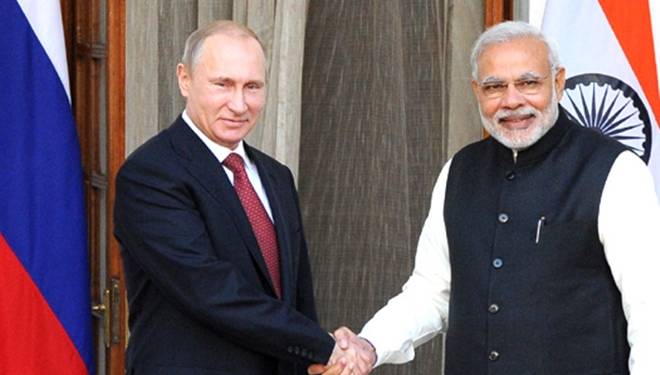It is a win-win situation for India and a precarious scenario for Xi Jinping. In a recently concluded senior-level consultations led by the foreign secretary of Russia, New Delhi and Moscow have decided to explore the possibilities of a partnership in the Indo-Pacific region with focus on the ASEAN region. Indian Secretary Harsh Vardhan Shringla expressed that India is eager to cooperate with Russia in the Southeast Asian region. This cooperation can be the building block linking Southeast Asia and the Russian far east. Putin has been sceptical about the entire regional construct and sees the Indo-Pacific as a tool to target Moscow’s interests in the region. But this time Putin’s concerns were discussed frankly and freely.
Secretary Shringla shared the Indian way of looking at the Indo-Pacific situation. Experts were quoted saying that Russia is receptive to the suggestions offered by India and is expected to explore a bilateral partnership with New Delhi concerning surface conditions visible in the post-Wuhan virus economic development model.
For a very long time, India has emphasised the construction of a free, open and non-discriminatory Indo-Pacific where rule-based machinery could work hand in hand with developmental activities. For this reason, India sees Russia as a crucial link in the development of the entire region. With Russia’s vast size, it is present and well-positioned in the regions of Eurasia, the Far-east, Pacific and Arctic.
India’s interests in forging ties with Russia’s far east regions can be identified by the line of credit that New Delhi provided for developmental projects in Russia’s far east region Vladivostok as a part of India’s Act Far East policy in 2019.
India, Russia and Japan held their trilateral dialogue in January aiming towards increasing cooperation in Russia’s far east region in the sectors of coal mining, energy, transportation, logistics, tourism among others. The interesting thing to notice is that the region is in proximity to the areas with Chinese dominance.
India and Russia have shared a long history of working closely in numerous international and multilateral organisations like the Shanghai Cooperation Organisation, the G20, BRICS.
The Secretary was also quoted as saying “cooperation in the region, in particular along with our friends from ASEAN, South East Asia and under organisations like ASEAN regional forum and the East Asia Summit”. The foreign secretary who landed in Moscow on his first abroad visit in 2021 stated that it was only ‘fitting’ to visit Russia first.
He further reiterated India’s commitment to a ‘multi-polar world and multi-polar Asia’ where there is no room for a bully. Secretary Shringla highlighted the threats posed by some terrorist outfits and states which support them. He stated how India and Russia are cooperating in the rebuilding of a war-torn Afghanistan which is going through a very critical phase. India and Russia are working together in the fields of health, education and infrastructure which Afghanistan needs today.
It is also important to notice the balanced independent policy that India has deployed in its relation with the US and Russia. India is determined to go ahead with the $5.2 billion deal regarding the Russian S-400 air defence system despite the growing ties with Washington. India’s diplomatic prowess is commendable when we observe Turkey facing hardships from the US for procuring the same system.
Therefore, India and Russia, which are regarded as all-weather friends, are strengthening their ties. Russia also shares the concerns born due to irrational, uncalled Chinese aggression. The Indo-Pacific region which is the confluence point for a large number of parties holds the utmost importance in the dialogue between Moscow and New Delhi. Putin understands his responsibility of keeping the region peaceful and the only way of achieving such a feat is by cooperating with India.
